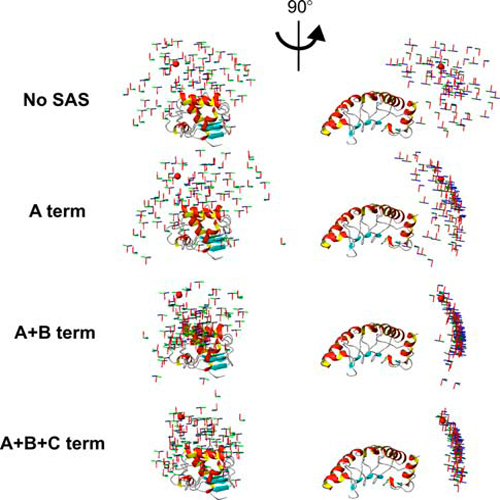A structure refinement protocol combining NMR residual dipolar couplings and small angle scattering restraints
01-Aug-2008
We present the implementation of a target function based on Small Angle Scattering data (Gabel et al. Eur Biophys J 35(4):313–327, 2006) into the Crystallography and NMR Systems (CNS) and demonstrate its utility in NMR structure calculations by simultaneous application of small angle scattering (SAS) and residual dipolar coupling (RDC) restraints. The efficiency and stability of the approach are demonstrated by reconstructing the structure of a two domain region of the 31 kDa nuclear export factor TAP (TIP-associated protein). Starting with the high resolution X-ray structures of the two individual TAP domains, the translational and orientational domain arrangement is refined simultaneously. We tested the stability of the protocol against variations of the SAS target parameters and the number of RDCs and their uncertainties. The activation of SAS restraints results in an improved translational clustering of the domain positions and lifts part of the fourfold degeneracy of their orientations (associated with a single alignment tensor). The resulting ensemble of structures reflects the conformational space that is consistent with the experimental SAS and RDC data. The SAS target function is computationally very efficient. SAS restraints can be activated at different levels of precision and only a limited SAS angular range is required. When combined with additional data from chemical shift perturbation, paramagnetic relaxation enhancement or mutational analysis the SAS refinement is an efficient approach for defining the topology of multi-domain and/or multimeric biomolecular complexes in solution based on available high resolution structures (NMR or X-ray) of the individual domains.











